|
|
|
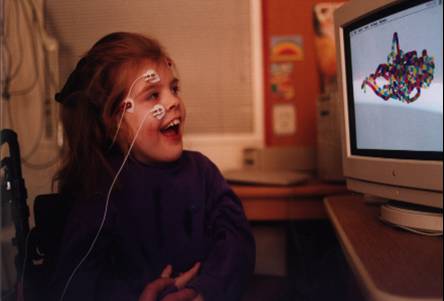
Enabling Children with Severe Disabilities to Control the Computer through Eye and Head Movements
James Gips, Egan Professor of Computer Science
Computer Science Department, Carroll School of Management
Fulton Hall 460, Boston College, Chestnut Hill, MA 02467
Phone: (617) 552-3981
Email: gips@bc.edu
WWW: www.cs.bc.edu/~gips/
|
| |
|
Overview
|
|
| |
|
Introduction
This project is about helping people who were born with cerebral palsy or congenital brain disorders or who suffered
automobile or drowning accidents use the computer to live the fullest possible lives.


Access Technology
- EagleEyes: An electrodes-based technology for people who can control only their eyes
- Camera Mouse: A camera-based technology for people who have some voluntary control of their head or thumb or toe
|
|
EagleEyes
(with Peter Olivieri, Joe Tecce)
- Uses five electrodes to sense EOG

- The horizontal and vertical EOG signals are proportional to the angles of the eyes in the head (1° ˜ 10 µV)
- A general mouse replacement system
EagleEyes Hardware
(with Bill Ames)
- Standard electrode leads
- Two AC amplifiers (.01 Hz – 30 Hz)
- A/D converter
- Optical isolation
- USB connection

Michael Nash
- Cannot speak. Has no voluntary muscle control. Except he can move his eyes
- Was diagnosed as having the intelligence of a “three-month old” when he came to us.
- Has an EagleEyes system at home.
- Graduated from high school June 2002.
Use of EagleEyes
(with Phil DiMattia)
- Joint project with Campus School
- Used by dozens of children and young adults in the U.S. and U.K.
- Some dramatic success stories
- Various applications including education, robot wheelchairs, and music
EagleEyes and Music
As a mouse replacement system, EagleEyes can be used with any Windows software. Here the technology is used with a music
creation program developed at the M.I.T. Media Lab.
|
|
Camera Mouse
(with Margrit Betke,�now at Boston University)
Uses a camera to track the nose (or thumb or toe). As the nose moves the mouse pointer moves accordingly.
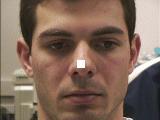
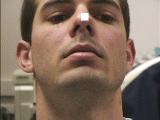
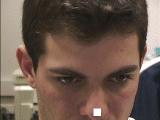
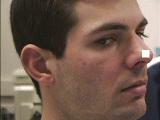
How the Camera Mouse Works
- User clicks on the feature to be tracked
- Take the 15x15 pixel square of the feature
- In the next image do a search to find the 15x15 region with the highest correlation
- Move the mouse pointer accordingly
- Repeat in the background every 1/30th of a second
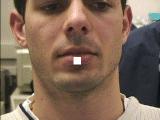
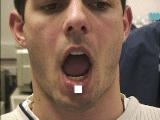
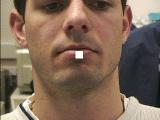
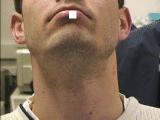
Jordan was the first person to have a Camera Mouse system in her home. It tracks her chin.


From an email from Jordan’s mom
| “We are a family of four. What makes us different is that we have a daughter who is three and has cerebral palsy …
The best thing that the Camera Mouse System has given us, is watching both of our daughters sharing and playing at
something that brings them so much joy and giggles. That is an experience that should not be missed by other families.” |
 |
|
|
Custom Application Software
(many with Pete Olivieri)
|
|
HCI Issues
- Basic operation is to move the mouse pointer
- Each student has different accuracy that might change from day to day
- Students exhibit dramatically different cognitive abilities
- Mouse clicks are done using dwell time
- Large targets help
- Rest areas help
|
|
Project Structure
I think of this as a “bottom-up” project with a great variety of people – faculty, grad students, undergraduates, parents,
administrators, friends, people at other institutions – joining in the project and making contributions as they deem
appropriate.
Project TEAM
- Help pre-school children with cerebral palsy
- Multi-disciplinary (Technology, Education, And Medicine)
- Joint project with Children’s Hospital and the Campus School
- Can assistive technology and newly developed practice make a difference in these children’s lives?
Spinal Cord Initiative
- Establish a Center of Excellence for children and young adults with spinal cord injury
- Several Boston institutions involved:
- Beth Israel Hospital
- Children’s Hospital
- Travis Roy Foundation
- Boston College
|
|
For more information
|
|
|























